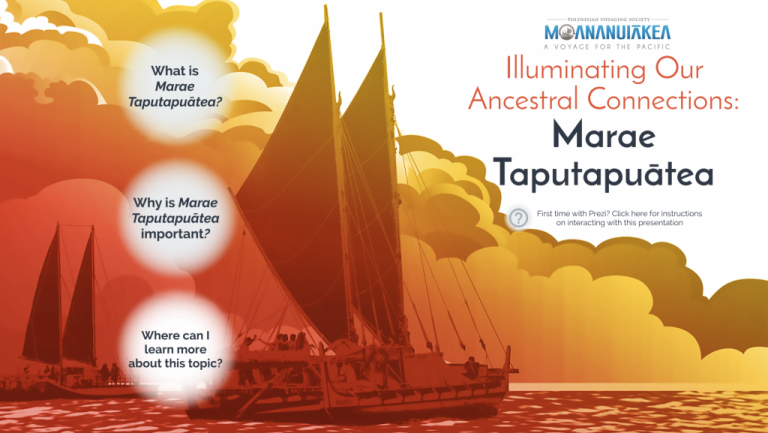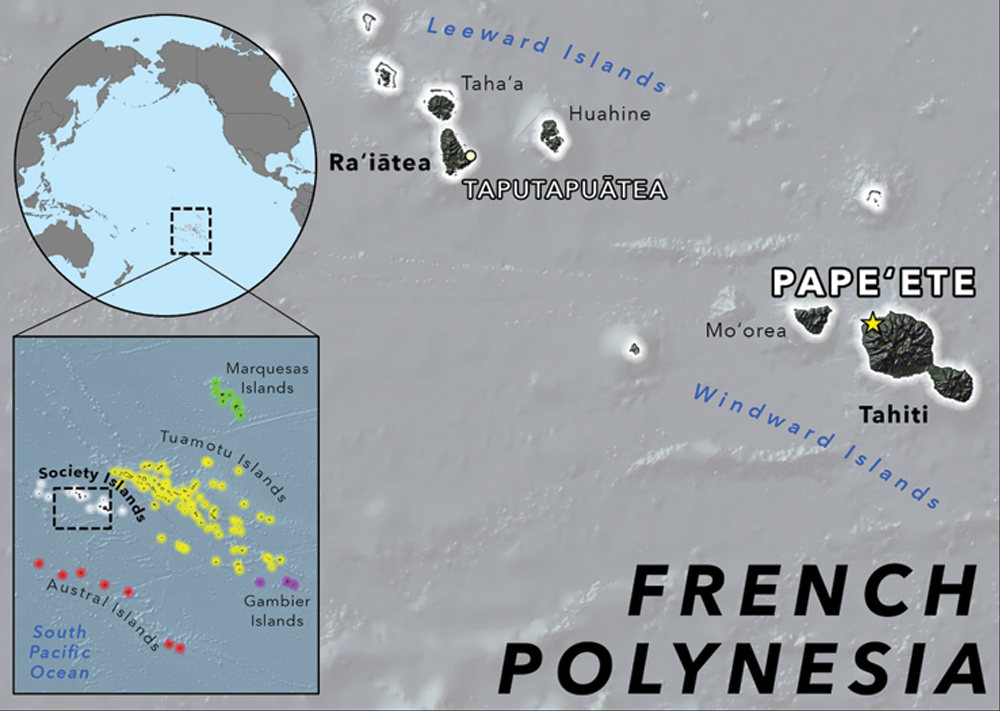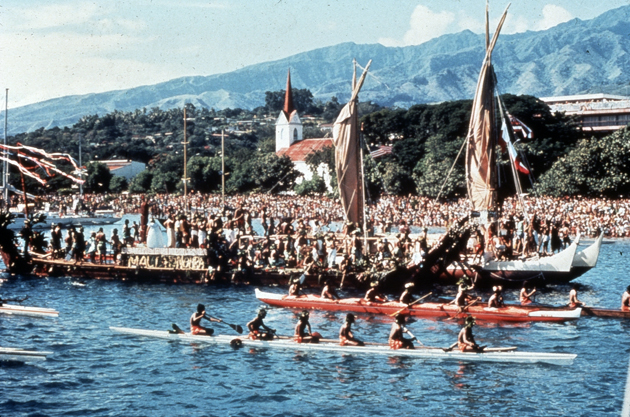
Ho’okele, meaning “to steer,” is also the term for navigator and voyager. When we think about steering a wa’a kaulua (double-hulled canoe), what comes to mind is the hoe uli, the long steering paddle that guides the canoe along the ala kai, or “sea road.”

Heritage Pūʻolo – Kealaikahiki and Marae Taputapuātea
In this two-part series entitled “Illuminating Our Ancestral Connections,” learn more about Kealaikahiki, the heritage corridor traveled by Hōkūleʻa and Hikianalia, and Marae Taputapuātea, the sacred ancestral homeland of navigational knowledge. These heritage pūʻolo, or bundles of knowledge, provide an introduction to cultural topics that can be explored in depth through the resources made available by the Kaʻiwakīloumoku Pacific Indigenous Institute.
Track the voyage at https://waahonua.com/voyage-dashboard/

French Polynesia
French Polynesia comprises 118 geographically dispersed islands and atolls stretching over more than 1,200 miles (2,000 km) in the South Pacific Ocean. The total land area of French Polynesia is 1,609 sq miles (4,167 square km).
French Polynesia is divided into five groups of islands: the Society Islands archipelago, the Tuamotu Archipelago, the Gambier Islands, the Marquesas Islands, and the Austral Islands.
Among its 118 islands and atolls, 67 are inhabited. Tahiti, which is in the Society Islands group, is the most populous island. French is the official language, however Reo Mā’ohi, the Tahitian language is widely used for daily communication.

“When Hokule’a arrived at the beach in Pape’ete Harbor, over half the island’s people were there, more than 17,000 strong, and there was a spontaneous affirmation of what a great heritage we shared.”
Hōkūle’a first voyage to Tahiti in 1976 – Polynesian Voyaging Society
Kumu Resources
Integrate these lessons and activities in your classroom! Browse our lesson plans, digital activities, worksheets and videos.

